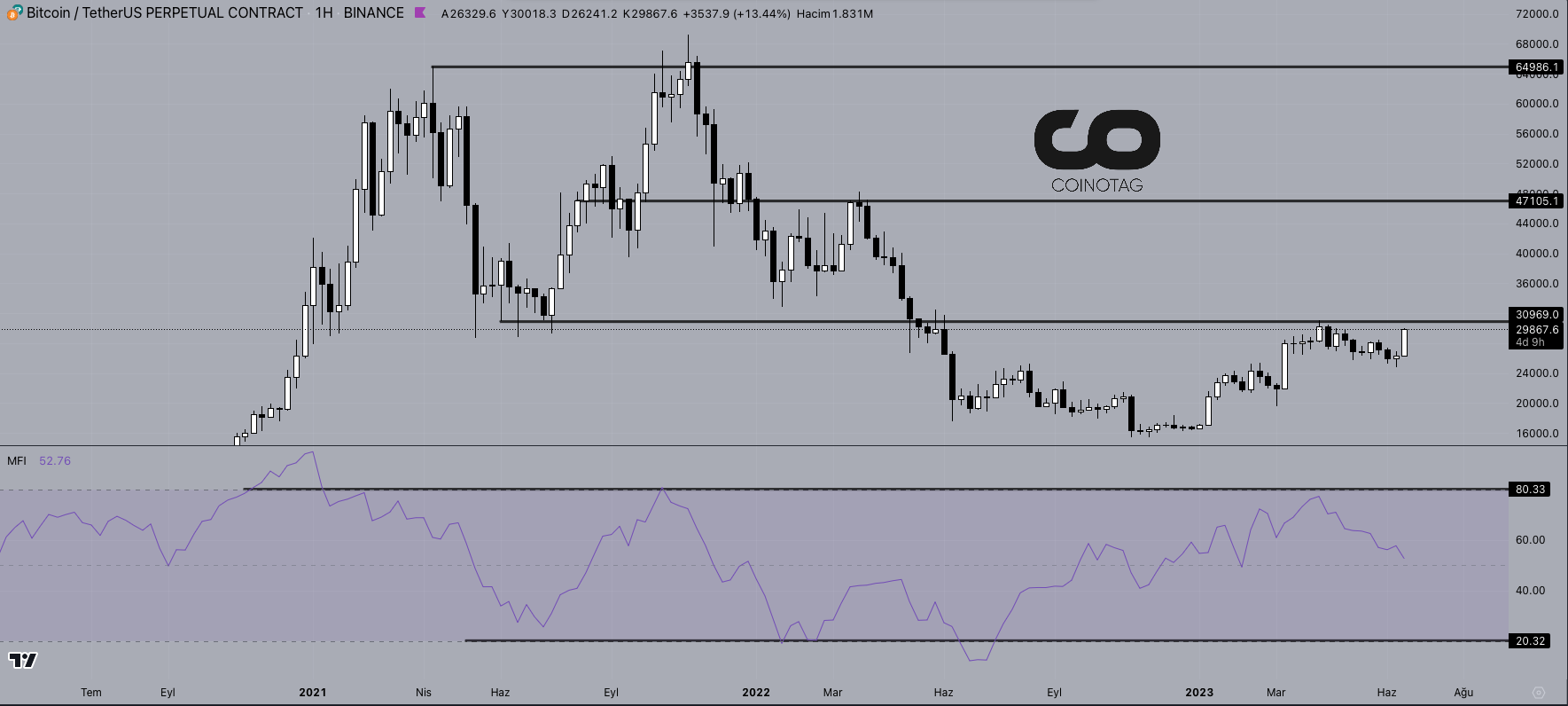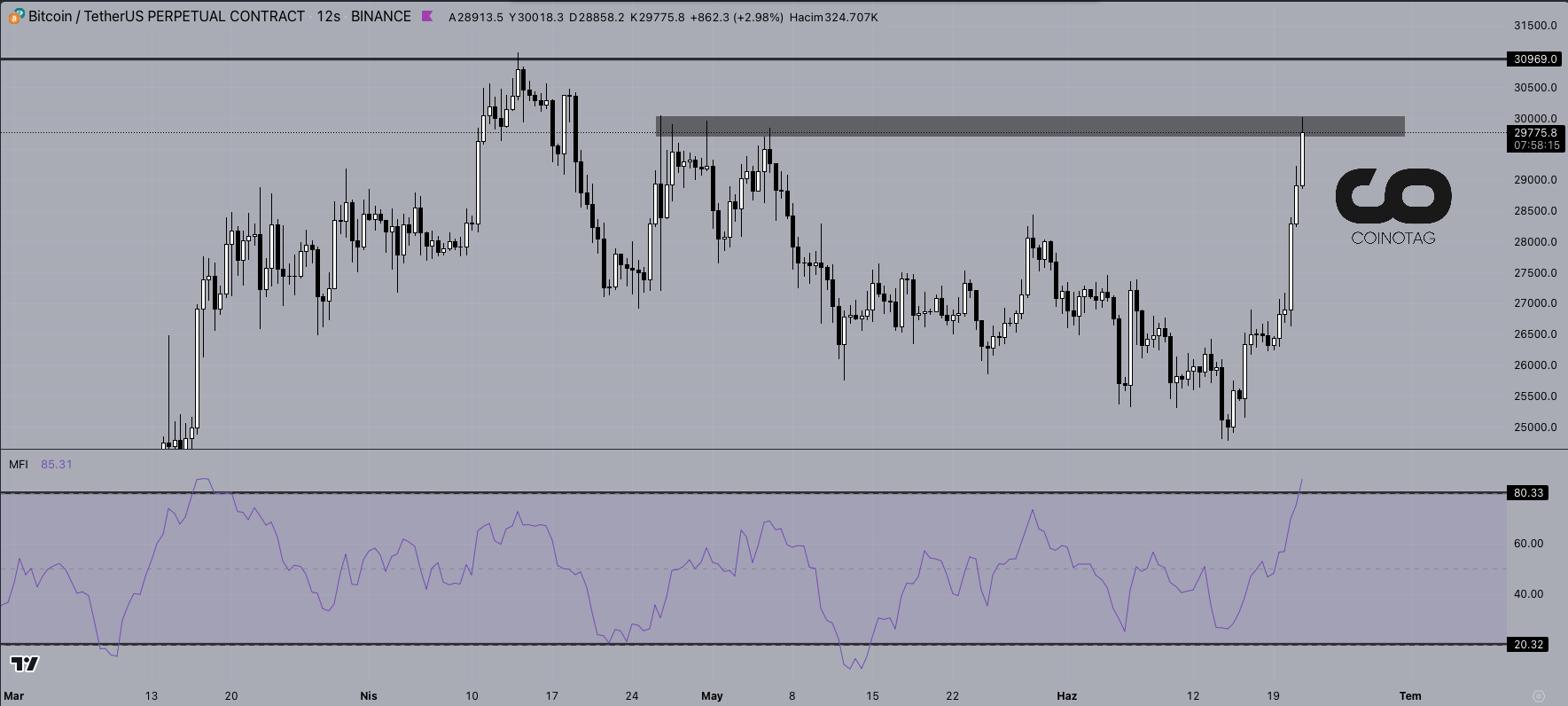- The Money Flow Index (MFI) is a technical oscillator that combines price and volume data to generate overbought or oversold signals.
- An MFI value above 80 indicates overbought conditions, while a value below 20 indicates oversold conditions.
- Divergences between price and MFI can be considered potential reversal signals in the current trend.
The Money Flow Index (MFI) is an indicator that combines price and volume data to generate overbought and oversold signals. It is used to identify potential trend reversals by tracking divergences in the current price trend.
What is the Money Flow Index (MFI)?
The Money Flow Index (MFI) is a technical oscillator that uses price and volume data to identify overbought or oversold signals in an asset. It can also be used to detect divergence, which warns of a potential change in price trend. The oscillator ranges from 0 to 100.
Unlike traditional oscillators like the Relative Strength Index (RSI), which only considers price, the Money Flow Index combines both price and volume data. For this reason, some analysts refer to MFI as a volume-weighted RSI.
- The Money Flow Index (MFI), also known as the Money Flow Indicator, is a technical indicator that generates overbought or oversold signals using both price and volume data.
- An MFI value above 80 is considered overbought, while a value below 20 is considered oversold. However, sometimes the thresholds of 90 and 10 are also used as reference levels.
- Divergence between the indicator and price is noteworthy. For example, if the indicator is rising while the price is falling or remaining stable, it could indicate an upcoming price increase.
How to Use the Money Flow Index (MFI)?
One of the primary ways to use the Money Flow Index is to look for reversals. This occurs when there is a divergence between the price and the oscillator, indicating a potential trend reversal.
For example, if a cryptocurrency is in an uptrend and the Money Flow Index starts dropping below the 80 level, it signals a downward price movement. Similarly, if the cryptocurrency is in a downtrend and the Money Flow Index rises above the 20 level, it indicates an upward price movement and a potential trend reversal.
Traders often use multiple waves in price and MFI to identify larger divergences. For instance, if a stock reaches $10, retraces to $8, and then rallies to $12, forming two consecutive highs at $10 and $12, an MFI that creates a lower high when the price reaches $12 does not confirm the new rally. It could be an indication of an impending price drop.
Overbought and oversold levels are also used to identify potential trading opportunities. Crossings below 10 or above 90 are rare occurrences. Traders wait for the MFI to rise above 10 to confirm a long trade and drop below 90 to confirm a short trade.
Exits from the overbought or oversold zones can also be useful. For example, if an asset is in an uptrend and drops below the 20 (or even 30) level and then rises again, it could indicate the end of a pullback and the continuation of the upward trend. The same principle applies to a downtrend. A short-term rally can push the MFI up to 70 or 80, but if it drops below that level again, it may be time to enter a short trade in preparation for another decline.
Difference Between Money Flow Index and Relative Strength Index (RSI)
The Money Flow Index (MFI) and Relative Strength Index (RSI) are closely related. The main difference is that MFI incorporates volume, whereas RSI does not. Supporters of volume analysis believe that it is a leading indicator. Therefore, they believe that MFI provides more timely alerts and faster indications of potential reversals compared to RSI. One indicator is not inherently better than the other; they simply include different elements and thus provide alerts at different times.
Key Considerations for the Money Flow Index
MFI can generate false signals. It may indicate a favorable trading opportunity, but if the price does not move as expected, it can result in a losing trade. For example, a divergence may not always lead to a reversal in price.
The indicator may also fail to alert to something significant. For instance, a divergence may sometimes lead to a price reversal, but not all price reversals will have a divergence. Therefore, it is recommended for traders to use other analysis and risk control methods and avoid relying solely on one indicator.


